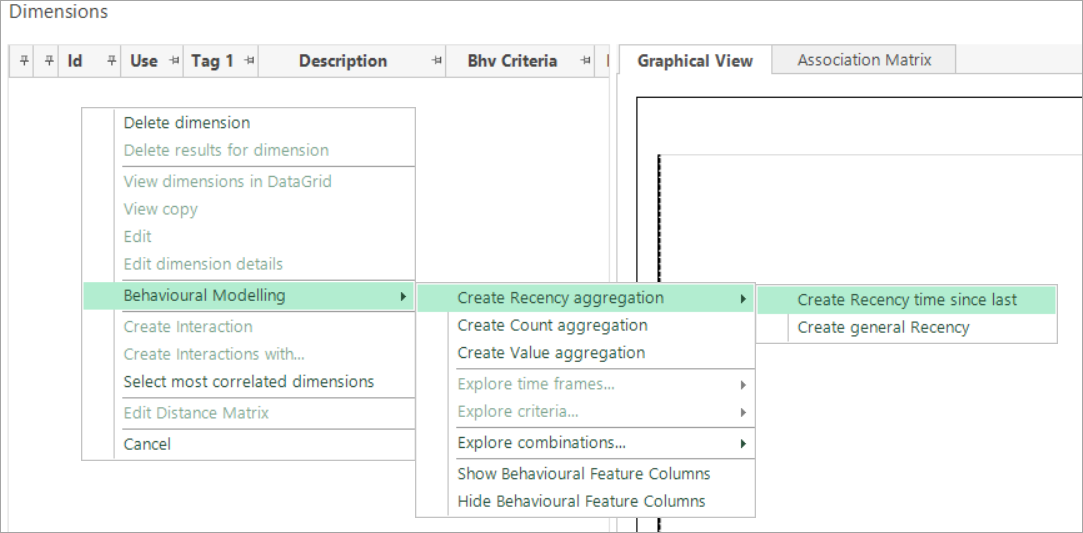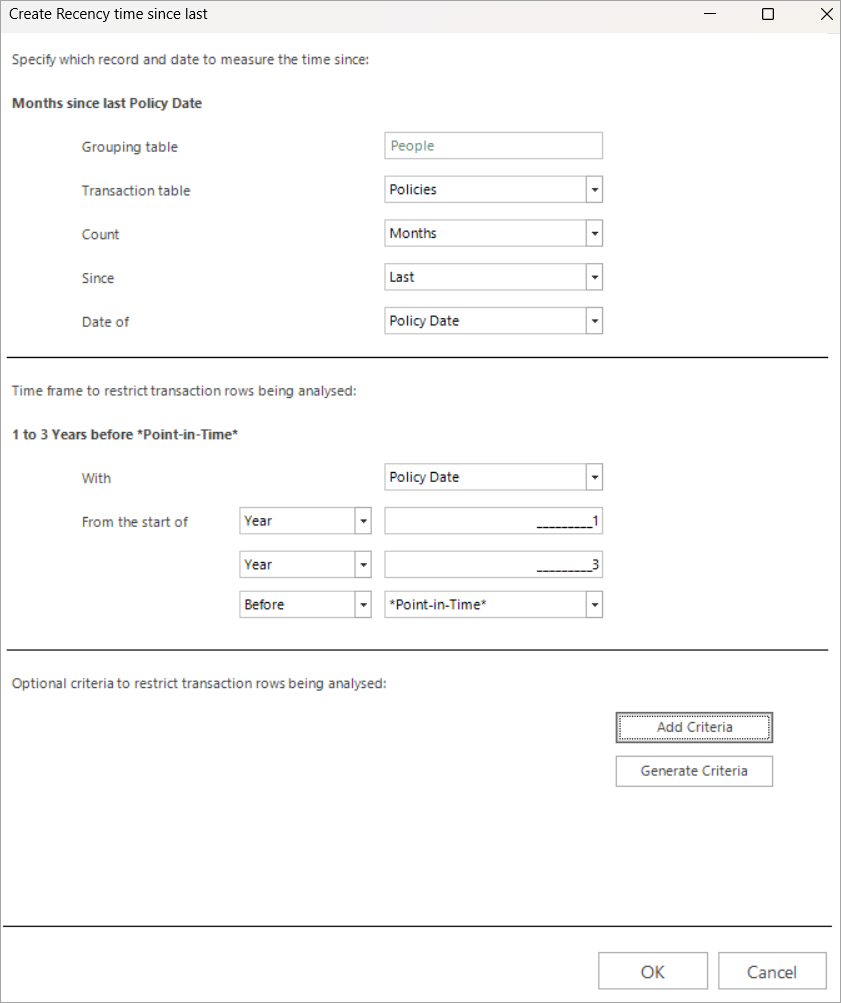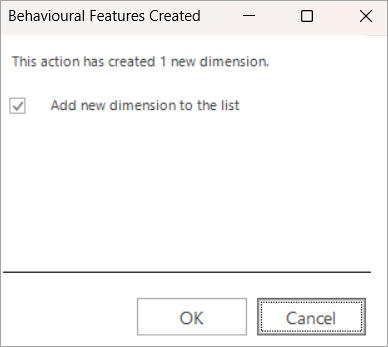Behavioural modelling - recency dimensions (behavioural features)
You can aggregate a person's recent transactions and identify behavioural features that are indicative of the audience you are targeting. Whilst most typically such features are RFV based aggregations created using numeric variables (e.g. cost of last booking), you can also use selector variables to examine categories (e.g. destination of last booking) associated with a person's recent behaviour.
Working with recency dimensions allows you to answer questions such as:
-
Does the time since a person last engaged with an email influence their likelihood of donating to a particular campaign?
-
Does the length of time since a person's last booking to Europe make them more or less likely to book another holiday to Europe?
-
Does the destination someone last visited have any bearing on them buying a travel insurance policy?
Let's consider the following example:
Does the time that has passed since a person last purchased an insurance policy make them more or less likely to take out insurance cover?
Here the behavioural feature needs to:
-
Group policies up to the person level.
-
Order each person's policies by the policy date.
-
Identify a person's last policy.
-
Determine how long ago the policy was taken out.
To get started:
-
Right click within the Dimensions panel, hover over Behavioural Modelling and select Create Recency aggregation.
-
Select Create Recency time since last.

The resulting window comprises of 3 sections:
-
The top panel is where you identify the transactional table the count should take place on, as well as which table to aggregate the transactions up to.
-
The middle panel is where you set the timeframe within which the transactions should have occurred. This can be significant - for example, a 'last policy' may have been taken very recently, or long ago. If a transaction occurred 10 years ago, is it still relevant and worth including?
-
The bottom panel allows you to add further criteria, but is not relevant in this example.
-
Complete the settings as per the screenshot below:

-
Click OK - a confirmation is displayed:

-
Click OK.
The above example counts the number of months since a person's last policy and then selects only those transactions that occurred in the 3 years before the point-in-time; here this is the training date of 01/01/2022.

You can use different transactional tables. You can also configure different counting units, such as days. Instead of the most recent policy (last), you can request the earliest policy (first).
The Date of drop-down only presents date variables from the relevant transactional table.
For an example of creating a recency dimension using a selector variable, see Behavioural modelling - creating recency dimensions using selector variables
For related topics see Behavioural modelling - creating dimensions (behavioural features)